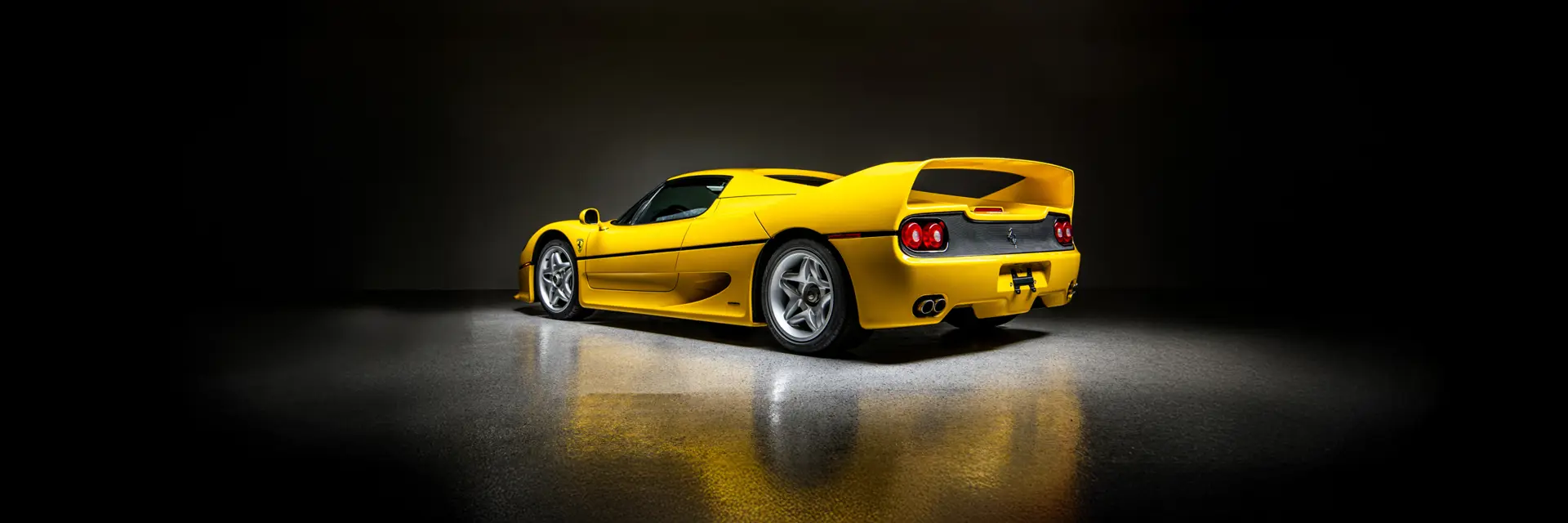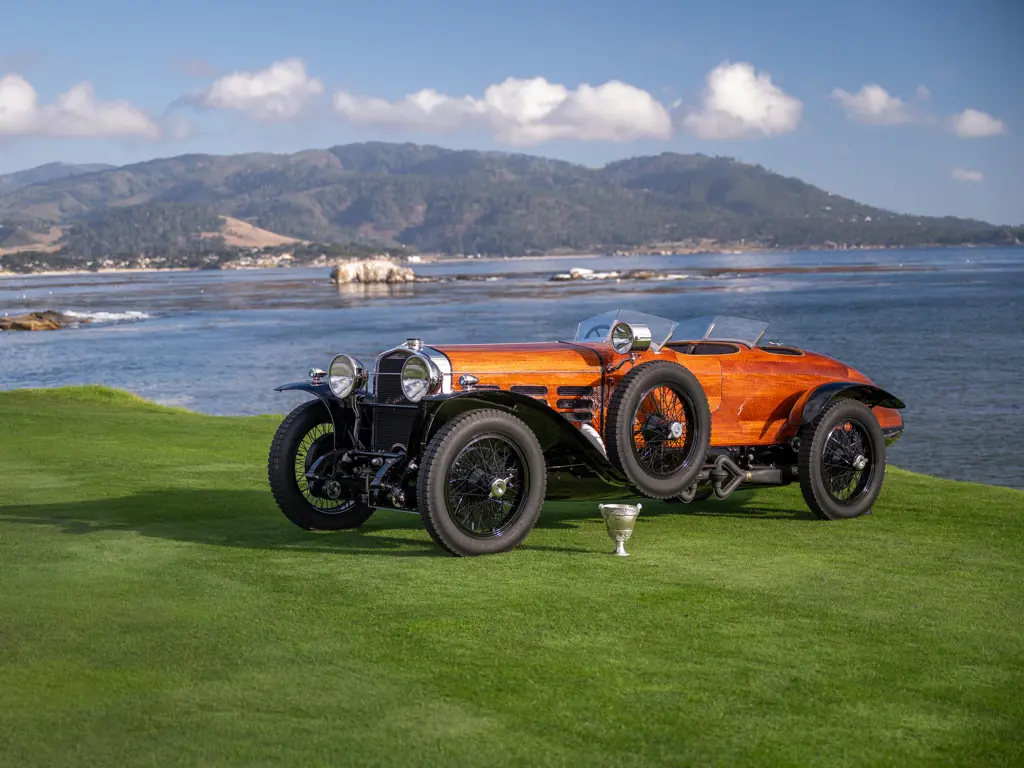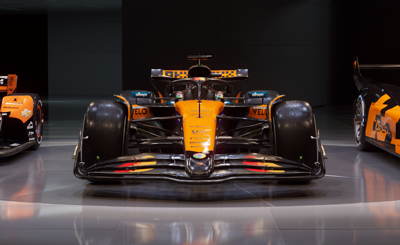Thirty years after its launch the fortunes of the Ferrari F50 have swung from being an overlooked middle child to the definitive choice for those in search of analogue driving thrills. This stunning example once belonged to an even more exclusive stable—Ralph Lauren's private car collection.
We live in an era of fast fashion, flyaway fads, and generational divides, which makes defining the concept of cool—especially the type of timeless, efortless chic that permeates Lauren's world—a tricky business. However, in the late nineties, you'd struggle to find a better visual allegory for this than the sight of the American designer driving his Giallo Modena F50 south towards Fifth Avenue.
What's more astounding at that exact moment: the fashion mogul enjoying the fruits of his success by taking a fraction of his legendary collection out to stretch its legs, or the jaw-dropping sight of the car itself? Finished in this blazing shade of yellow, with its carbon fibre body panels, open targa roof, those gorgeous deep-dish Speedline wheels, and an aerodynamic shape, it would have looked impossibly exotic carving past Fords, Jeeps, and Buicks in upstate traffic.
Reams of newsprint have been used to opine on this car's Pininfarina styling, which may fall just short of the functional brutality of the F40 or the timeless beauty of the 250 GTO. Even so, its clean lines, wide stance, and boldly graphic silhouette form a singular aesthetic reflective of the era. A voyeuristic glance through the black rear mesh panel offering a full view of its exotic drivetrain.
One of only two Giallo Modena F50s delivered to North America, and just 31 of the total 349 cars built, chassis 104798 was commissioned from the factory by Lauren in 1995, the same year the model made its public debut at the Geneva International Motor Show, arriving in New York the following spring. In his care, the Ferrari spent most of its time away from the glamour of the Big Apple, kept in an even more incongruous setting for a supercar; at his 16,000-acre Double RL ranch near Telluride, CO.
After changing hands, this particular car made only a handful of exclusive appearances, one of which was to scoop up a Platinum award at a Ferrari Club of North America concours event. Shortly after, it disappeared for over a decade. Now making its glorious return at Monterey in pristine condition (with a certification from Ferrari Classiche), it's a unique proposition for any serious collector.
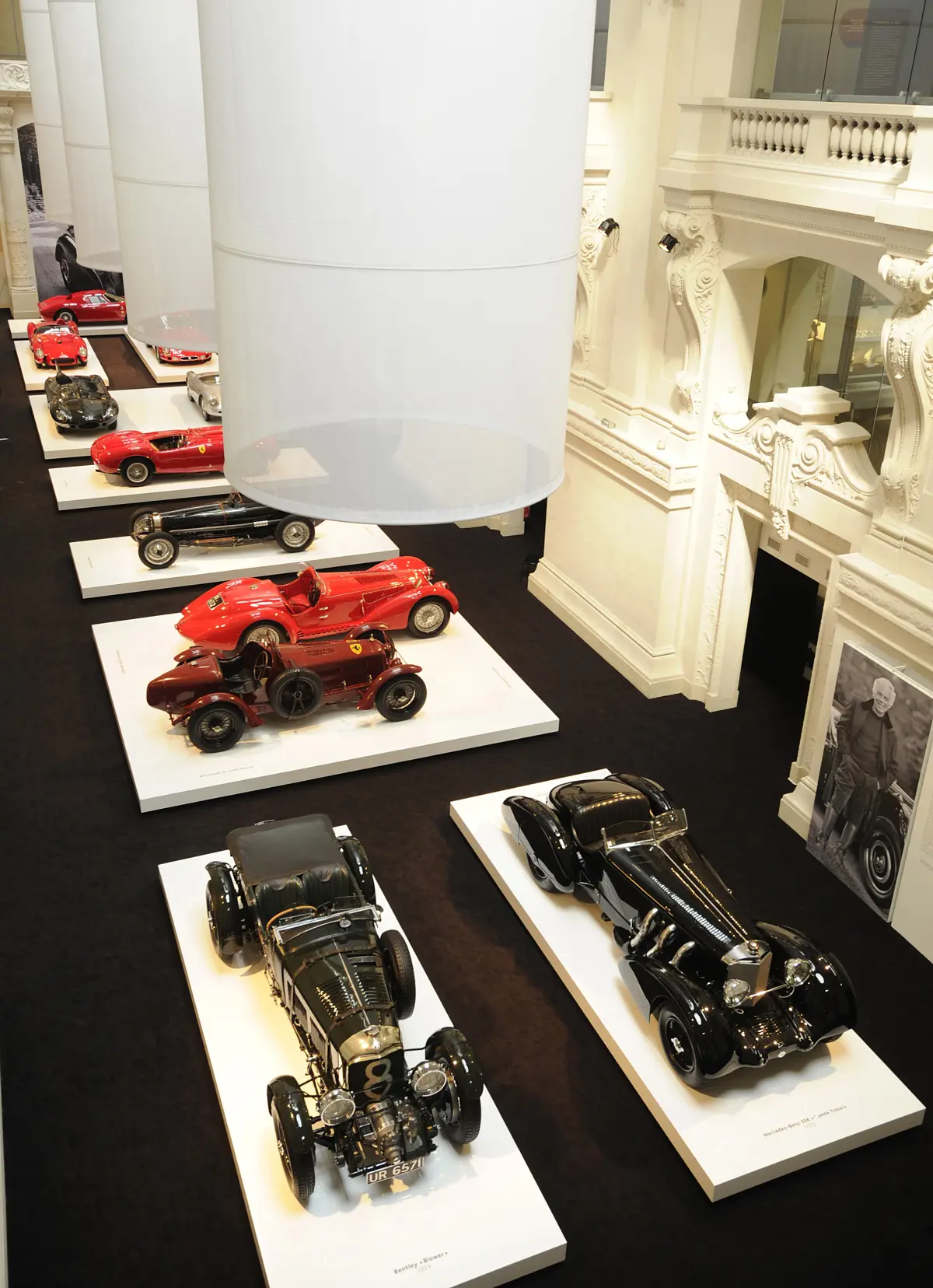
Far less common than the rich red Italian competition colours we expect from the Scuderia, Giallo Modena has grown into a bonafide Ferrari colour. It boasts a rich and storied history of adorning both factory and privateer racers (including Robert Kubica's #83 AF Corse 499P that claimed a thrilling overall victory at this year's 24 Hours of Le Mans), and it suits the F50's arresting exterior.
The model’s carbon fibre chassis was a first for a Ferrari road car. The lightness and strength of the exotic material surrounding the driver allowing for the barchetta roof design (the F50 was supplied with both a hard and soft-top) that didn't reappear on another limited-run car until the LaFerrari Aperta.
The incredible rarity of that yellow over Nero colour combination (matching the unmistakable Prancing Horse displayed on its bonnet, wings, and at the centre of its unadorned steering wheel) is also noteworthy on the basis that Lauren chose it for himself. The majority of his other Ferraris are finished in the marque's trademark Rosso Corsa—and he loves to coordinate his collection.
His private fleet (with a combined estimated north of $600 million) are all kept in pristine working order in a secret garage that has a permanent staff of four, including an archivist. The collector’s cars are a watermark of his prosperity and obsessive good taste. His passion for them as usable works of art, emblems of their respective eras and craftsmanship, is so woven into his personal mythos that they formed the backdrop for his New York runway show in 2017. Famously, he told Vanity Fair: “I bought them all to drive. I didn’t buy them to keep them in a garage and to shine them up.”
Even more remarkably, 17 handpicked examples (including five Ferraris) were put on public display in Paris at the Musée des Arts Décoratifs back in 2011. It's hard to argue that the 1964 250 LM, 1962 250 GTO, 1960 250 GT Berlinetta SWB, and 1958 250 Testa Rossa do not qualify as masterpieces, but this is the type of hallowed company that this particular F50 kept up until 2003.
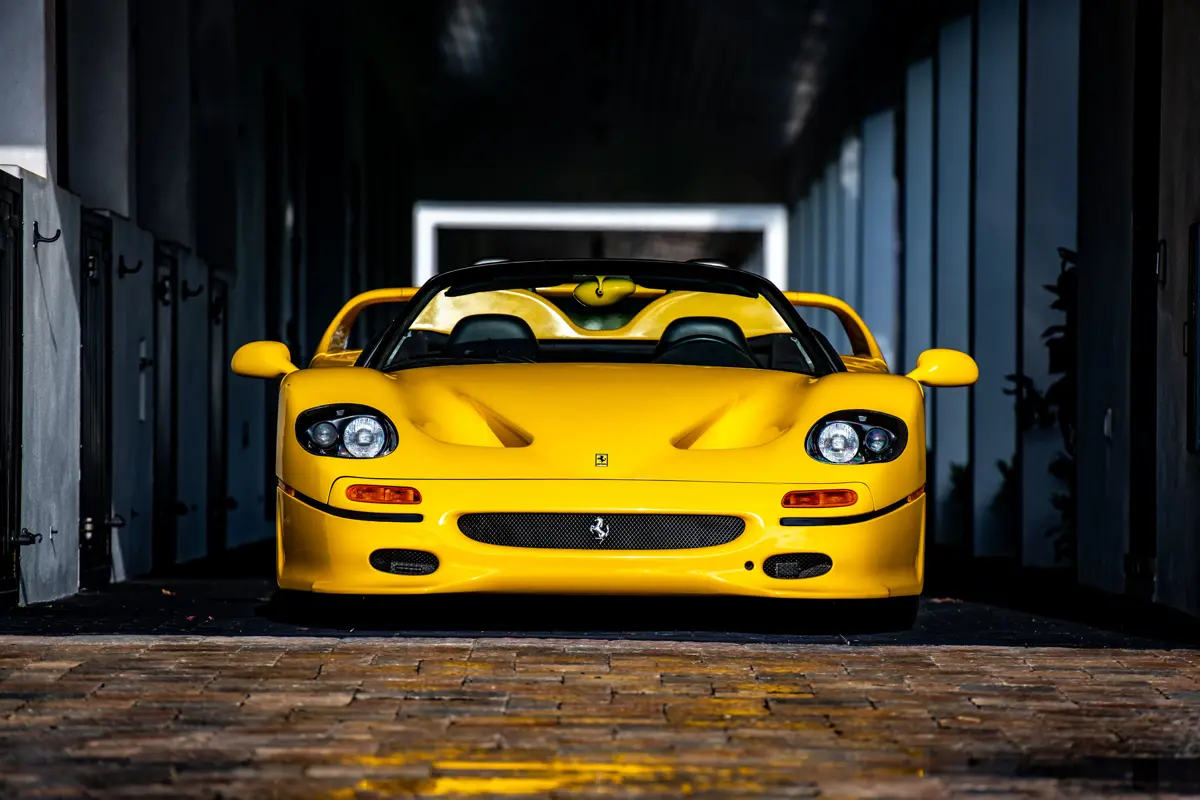
When asked about the exhibition, a laconic Lauren said: “I've never sought to buy cars to impress people; rather, I see myself driving them, living with them, and using them as if they were a part of me. I don't think of them as wonderful objects that I own and others come to admire. I drive them and use them to take my children for rides. Ultimately, I'm bringing them back to their true nature.”
This leads us to the question: What is the true nature of the F50? It was an F1-inspired tour de force that transplanted Scuderia Ferrari's race-proven engineering into a limited-series road car. The sheer technical ambition shown by Maranello's design team when they conceived it has to be admired. Rather than sticking to the turbocharged layout that powered the sublime 288 GTO and raucous F40, Ferrari adapted the 3.5-litre Tipo 036 V-12 engine from its 1990 F1 racer for the task.
Appropriately, in the 640 and 641 driven by Gerhard Berger, Mansell, and Prost, this scintillating engine was built as a response to the FIA's ban on turbo engines. With its heady 12,750 rpm redline and a fearsome 680 horsepower, it needed to be tamed to work in this new application.
For the roadgoing machine, capacity was increased to 4.7 litres, and that screaming redline was reduced to a more sustainable, yet still thrilling 8,500 rpm. It was a glorious centrepiece to build the rest of the car around—quite literally—as the V-12 was mounted directly to the carbon fibre monocoque and used as a stressed member to hang the manual gearbox and rear suspension.
With five valves per cylinder, twin overhead camshafts for each bank, and a state-of-the-art (in period) Bosch Motronic combined ignition and injection system, it was packed with innovation. Peak output was still rated at 513 horsepower. Better yet, its surging 347 pound-feet of torque was far more accessible than the intimidating all-or-nothing twin-turbo rush delivered by the F40. Variable length intakes at the carbon fibre manifold and innovative butterfly valves inside the exhaust headers shifted position as it spun faster, boosting performance and its sonorous howl.
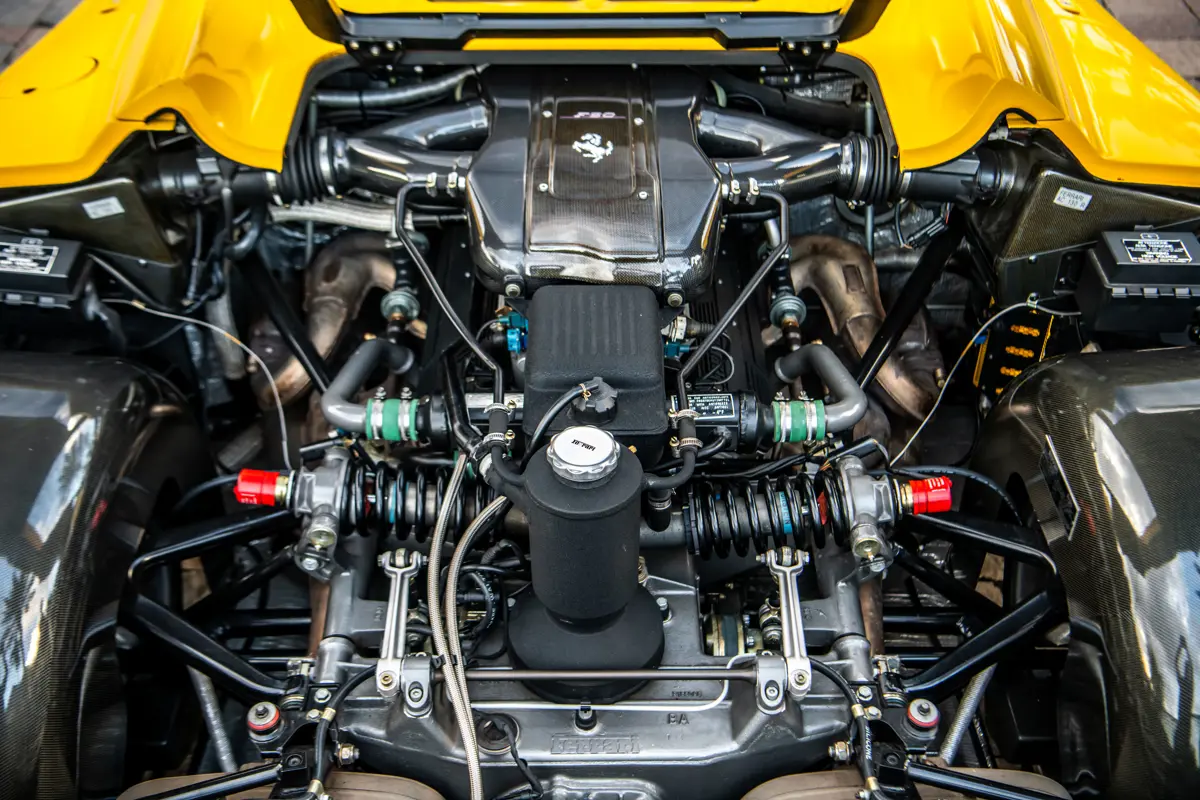
In a further nod to the world of single-seaters, the carbon Kevlar bodywork, push-rod suspension with double wishbones at each corner, and horizontally mounted shock absorbers were all there to add to the rarified allure of such an ambitious vehicle, an ethos it shares with the McLaren F1.
'A race car for the road' is a tired cliché in supercar circles, a marketing line deployed to lure gentlemen racers into pursuing their delusions of grandeur. But the F50 genuinely lives up to that vaunted title. With it, Maranello was flexing not only its racing prowess, but pioneering the use of parts, materials, and construction techniques that influenced a generation of cars that followed.
You can trace a direct line between what Ferrari accomplished with the F50 and what Mercedes-Benz attempted to reproduce with the Mercedes-AMG One more than a quarter of a century later. The intervening years have increased the technical complexity of such a feat no doubt, but the pairing of an F1-derived V-12 with an open-gated six-speed manual gearbox has never been repeated.
It's a fascinating comparison. Especially when you consider that after a brief dip in 2007, current values for immaculate examples of the F50 (such as this one) are now exceeding the original asking price for the newer hypercar from the Silver Arrows. Given the choice between the spine-tingling noise and unmatched pedigree of the F50's engine versus the notoriously fickle 1.6-litre turbo V-6 hybrid in the Mercedes, we can safely assume which one Ralph Lauren would choose.
The Ferrari's performance stats still pass muster even compared to more modern machinery, the thoroughbred V-12 giving the lucky owners access to an engine with the barely diluted character of a Formula One car at the push of a button. It was capable of exceeding 200 mph and covering the 0-60 mph dash in just 3.7 seconds, but the raw data fails to capture how it felt behind the wheel.
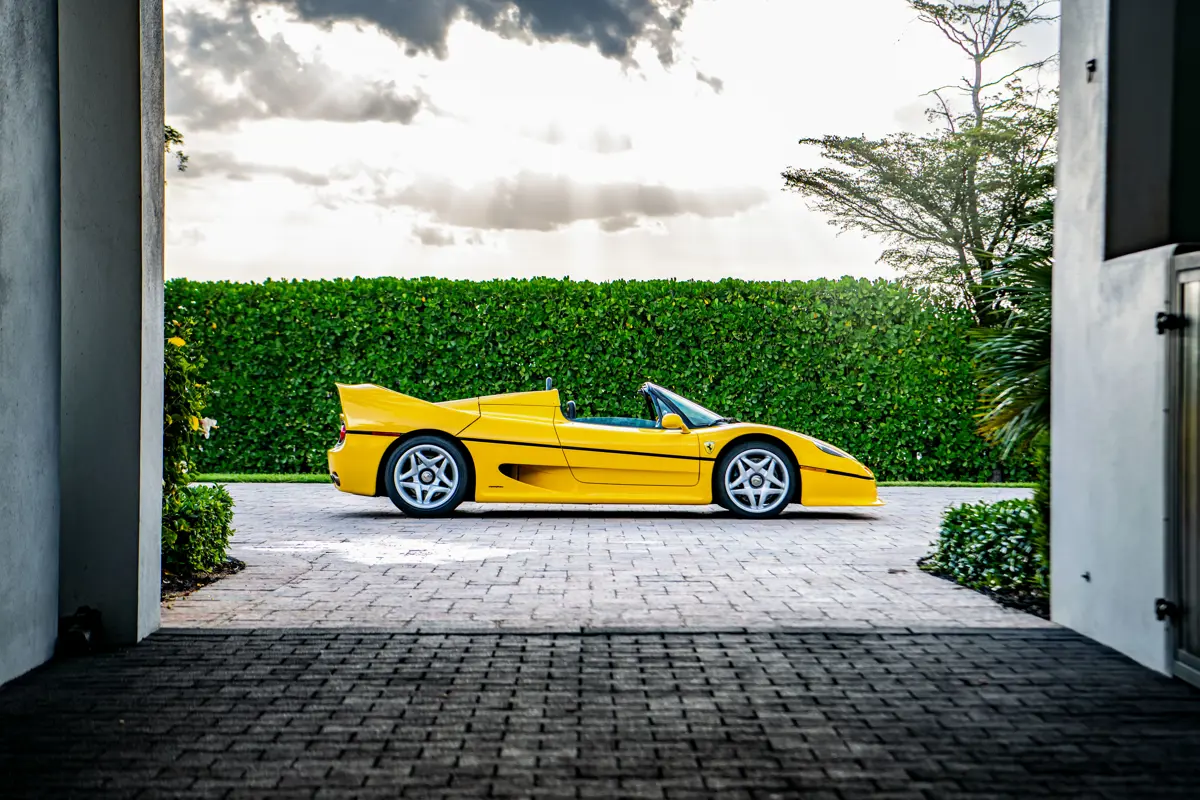
Although only a handful of people have had the chance to drive one in anger; it left an indelible impression on them. Top Gear presenter Chris Harris called it “mesmerising” and said it “might be the greatest Ferrari road car ever,” while Jethro Bovingdon, in evo magazine said that the Prancing Horse had “perfected what we think of as a supercar when it made the F50.”
However, beyond its stunning performance, desirability, and rarity, what truly sets the F50 apart is not what it has, but what it lacks. It occupies an enviable spot in automotive history where there were no artificial filters placed between man and machine. The steering is unassisted; it has no brake servo to interfere with pedal feel as you apply the ventilated discs to the Pagid pads. Push too hard and they'll lock up. Provoke the V-12 too soon, and there is no electronic safety net.
This then, is a car that demands the attention of its driver before bestowing them with rich reward. That might all sound rather intimidating, but the driving experience was reportedly anything but. Keenly balanced, wonderfully tactile, and easy to predict, the underlying harmony between the F50's components moving in unison could be felt through its controls and those sculpted seats. It's hardly surprising that a car with such qualities would come to earn the plaudits it so deserves.
Given the newfound appreciation of its status, one might naturally wonder why Mr. Lauren (who seems to always be ahead of the curve) sold it back in 2003. The answer may lie in his obsession with colour and specification. The designer has been known to subtly alter the paint tones on his Mercedes-Benzes and Bugattis, and arranges his fabulous collection by colour rather than era (in the main, the Ferraris are red, Porches are black, and so on). So, was the F50 guilty of the sin of standing out too much?
It cannot have been from a lack of driving excitement. In the same year that it parted ways with its original owner, the F50 was immortalised in another 90s icon, the SEGA gaming classic OutRun 2, pitting it against six other iconic Ferraris for time attack arcade racing. The pixellated fun introduced it to a brand-new audience of young Tifosi, and (much like the car itself) tapping into the success and cachet of the eighties original, while improving it in every measurable way.
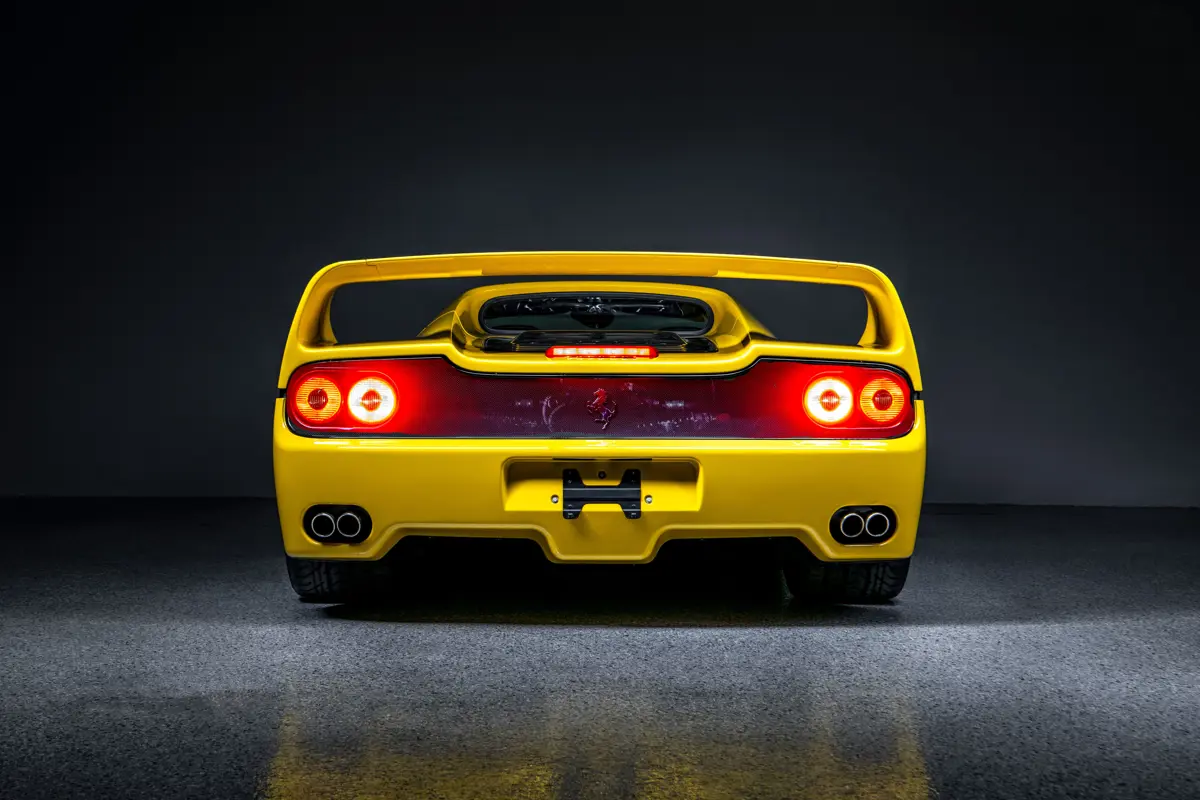
Although there's no record of them ever meeting, it's wonderful to imagine what Enzo Ferrari and Ralph Lauren might have discussed over a few courses at the Ristorante Cavallino. Both men built towering empires from humble beginnings, carved out in their own image and often relying on gut instincts, passion, and vision rather than any prescribed notions of success.
True entrepreneurs, Enzo's company and racing team came to epitomise the world's idea of what motorsport dominance and exotic supercars were, in the same way that Ralph Lauren remains synonymous with aspirational wealth, tapping into a mythical idealised version of America that seamlessly straddles preppy east coast collegiate style and western frontier heartland nostalgia.
Given the F50's reemergence into the spotlight, and rapidly appreciating values to match, we can only speculate how the 85-year-old billionaire feels now that his car has resurfaced. Now showing fewer than 5,400 miles, he's likely pleased to see it in such immaculate and original condition. Will its sale cause a twinge of excitement, or a pang of regret? Could this be the one that got away? In 2003, it probably didn't feel like it, but now the F50 is a car few serious collectors would overlook.
The former Ralph Lauren Ferrari F50 will be sold during RM Sotheby's Monterey auction on 15–16 August 2025.

